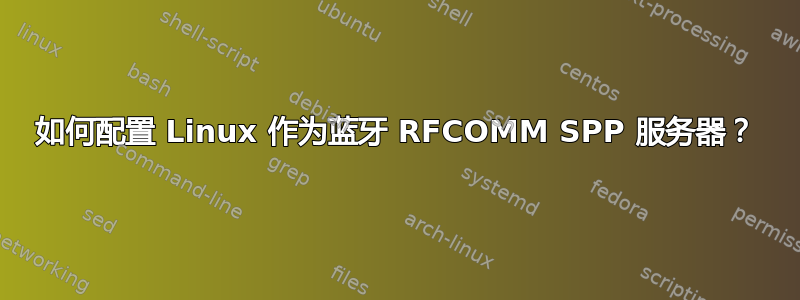
我正在编写一个 Android 手机应用,用于连接到我车上的蓝牙 RFCOMM 设备。我的手机应用会与它对话,执行 AT 命令。在开发工作中,我经常需要与设备通信,尝试不同的命令和操作。
我的邻居开始认为我很奇怪,因为我连续几个小时坐在车里,笔记本电脑的屏幕照在我脸上,像个脚本小子一样打字。
我更愿意将我的众多 Linux 服务器之一配置为蓝牙 RFCOMM 设备并允许我连接到它(在室内,当我坐在沙发上时)。
我想我必须从类似的事情开始
sdptool add SP
但然后呢?
我非常乐意编写一个 perl 应用程序来处理 I/O,但我只是不知道如何让 bluez 堆栈接受连接并将该流传送到 perl 应用程序。
答案1
使用 PerlNet::Bluetooth看起来很有希望...我正在使用下面的代码,大部分是从示例中复制和粘贴的,并从各种来源拼凑在一起。
cat rfcomm-fake-server.pl
#! /usr/bin/perl -w
# Information Sources:
# http://search.cpan.org/~iguthrie/Net-Bluetooth-0.40/Bluetooth.pm
# http://people.csail.mit.edu/albert/bluez-intro/x290.html#py-rfcomm-server-sdp
# http://people.csail.mit.edu/albert/bluez-intro/x232.html#rfcomm-server.py
# http://linuxdevcenter.com/pub/a/linux/2006/09/21/rediscovering-bluetooth.html?page=last
use Net::Bluetooth;
#### create a RFCOMM server
print "create rfcomm server\n";
$obj = Net::Bluetooth->newsocket("RFCOMM");
#### bind to port 1
print "binding to port 1\n";
if($obj->bind(1) != 0) {
die "bind error: $!\n";
}
print "listening with backlog 2\n";
#### listen with a backlog of 2
if($obj->listen(2) != 0) {
die "listen error: $!\n";
}
print "register UUID\n";
#### register a service
#### $obj must be a open and bound socket
# UUID Format: 00000000-0000-0000-0000-000000000000
# RFCOMM: 00001101-0000-1000-8000-00805F9B34FB
my $service_obj = Net::Bluetooth->newservice($obj, "00001101-0000-1000-8000-00805F9B34FB", "FAKEOBD", "Fake OBD Adapter");
print "Now what?\n";
unless(defined($service_obj)) {
print "There was a problem registering the UUID...\n";
die ("Couldn't register UUID/service");
#### couldn't register service
}
#### accept a client connection
print "Blocking until we receive an incoming connection";
$client_obj = $obj->accept();
unless(defined($client_obj)) {
die "client accept failed: $!\n";
}
#### get client information
my ($caddr, $port) = $client_obj->getpeername();
print "Connected to $caddr on port $port\n";
#### create a Perl filehandle for reading and writing
*CLIENT = $client_obj->perlfh();
print CLIENT "Hello there?";
while (<CLIENT>) {
print "Data: "
}
答案2
我尝试了 regulatre 的 Perl 脚本,但无法使其工作。问题是 Net::Bluetooth 模块没有向 SDP 正确注册该类。
最后,我发现这个Java示例可以完美运行:
http://www.jsr82.com/jsr-82-sample-spp-server-and-client/
请注意,它要求您在 Linux 上安装 BlueCove jar。如果您的 Linux 有“bluez”堆栈,那么您将需要 BlueCove 的两个 jar,名为
- bluecove-版本.jar
- bluecove-gpl-版本.jar
答案3
虽然这是一个相当老的问题,但“如何让 bluez 堆栈接受连接并随后将该流传输到 perl 应用程序”的答案是rfcomm。您必须将 SDP 记录缩小到您要使用的特定频道,例如:
sdptool add --channel 23 SP
rfcomm然后像这样运行(hci0作为您选择的蓝牙设备):
rfcomm watch hci0 23 yourperlscript.pl {}
其中{}将被替换为连接的套接字设备,例如/dev/rfcomm0。通过将其附加到 的调用yourperlscript.pl,该套接字名称将作为第一个命令行参数传递给您的脚本。我不太了解 perl,但您应该能够创建一个绑定到给定设备的对象。


